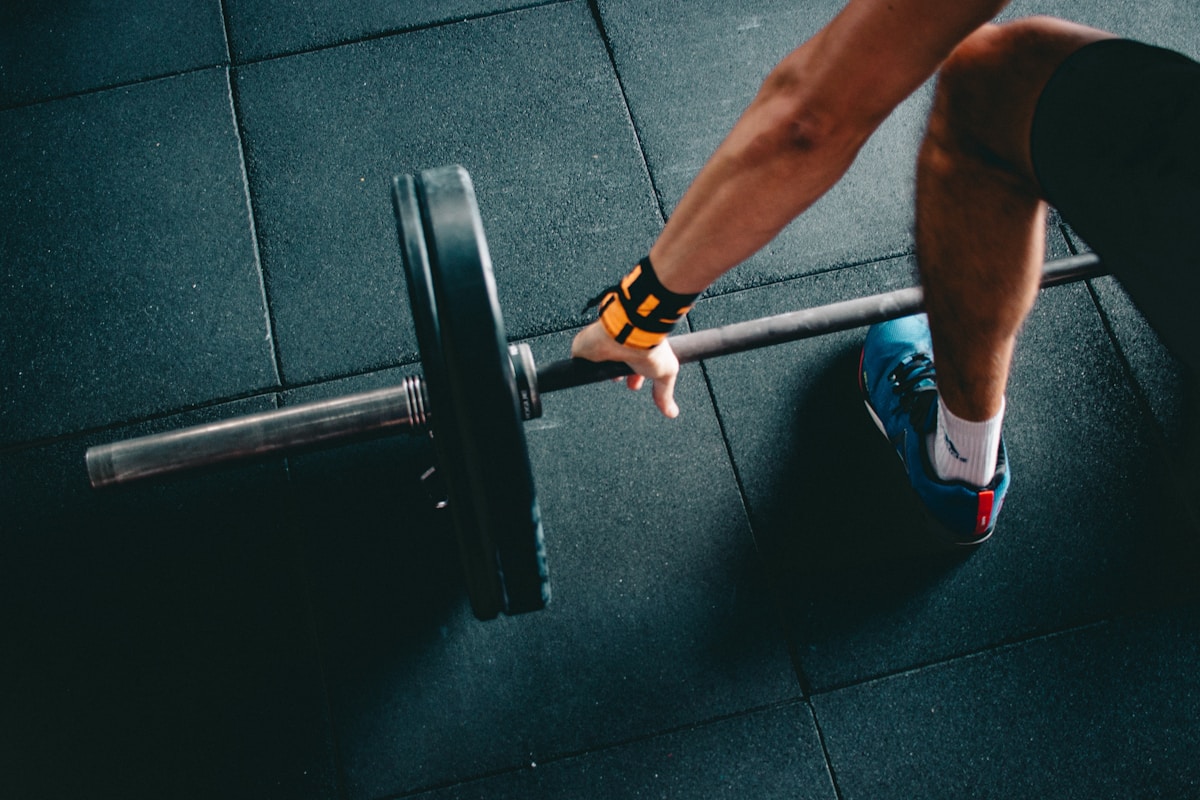Tabata Training: Unleashing the Power of High-Intensity Interval Training
The Science Behind Tabata Training: Understanding the Principles of High-Intensity Interval Training (HIIT)
The Science Behind Tabata Training: Understanding the Principles of High-Intensity Interval Training (HIIT)
Tabata training has gained significant popularity in the fitness world for its efficient and effective approach to high-intensity interval training (HIIT). It is named after Dr. Izumi Tabata, a Japanese researcher who conducted a groundbreaking study on the benefits of this training method.
The essence of Tabata training lies in its unique structure of intense work intervals followed by short rest periods. Typically, a Tabata workout consists of 20 seconds of all-out effort, followed by 10 seconds of rest, repeated for a total of 4 minutes.
The science behind Tabata training lies in its ability to stimulate both aerobic and anaerobic energy systems, resulting in increased cardiovascular fitness, improved endurance, and enhanced fat burning. The intense bursts of exercise push the body to its limits, triggering a phenomenon known as excess post-exercise oxygen consumption (EPOC). This means that even after the workout, the body continues to burn calories at an elevated rate to restore oxygen levels and repair muscle tissue.
Research has shown that Tabata training can significantly improve aerobic and anaerobic capacity, increase metabolism, and promote fat loss. It challenges the body to adapt and become more efficient at utilizing oxygen, leading to improved overall fitness levels.
Understanding the science behind Tabata training allows individuals to make informed decisions about incorporating this high-intensity workout into their fitness routine. By engaging both the cardiovascular and muscular systems, Tabata training provides a time-efficient and effective way to boost performance and achieve fitness goals.
In this article, we will delve deeper into the principles of Tabata training, its physiological effects, and the numerous benefits it offers for individuals seeking a challenging and results-driven workout routine.
Tabata vs. Traditional Cardio: Exploring the Benefits and Effectiveness of Tabata Training
Tabata vs. Traditional Cardio: Exploring the Benefits and Effectiveness of Tabata Training
Tabata training has gained immense popularity as a highly effective and time-efficient workout method. In comparison to traditional cardio exercises, such as steady-state jogging or cycling, Tabata training offers unique benefits that can take your fitness to new heights.
One of the key differences between Tabata training and traditional cardio is the intensity level. Tabata workouts consist of short bursts of high-intensity exercise followed by brief rest periods. This approach challenges the body in a different way than traditional cardio, which often involves longer durations of moderate intensity.
The high-intensity nature of Tabata training has been shown to increase both aerobic and anaerobic capacity, improve cardiovascular fitness, and promote greater calorie burn. In fact, studies have indicated that Tabata training can provide similar or even greater cardiovascular benefits compared to longer duration, steady-state cardio workouts.
Additionally, Tabata training offers the advantage of time efficiency. A complete Tabata workout typically lasts only 4 minutes, making it ideal for individuals with busy schedules who want to maximize their workout in a short amount of time.
Furthermore, Tabata training has been found to have a significant impact on metabolic rate. The intense intervals of exercise stimulate the body’s metabolic response, leading to an increased calorie burn both during and after the workout. This can be particularly beneficial for individuals aiming to lose weight or improve body composition.
In this article, we will explore the benefits and effectiveness of Tabata training compared to traditional cardio exercises. Whether you’re looking to improve your cardiovascular fitness, boost your calorie burn, or add variety to your workout routine, Tabata training offers an exciting and challenging alternative to traditional cardio workouts.
Tabata Exercises: A Comprehensive Guide to the Best HIIT Movements for Maximum Results
Tabata Exercises: A Comprehensive Guide to the Best HIIT Movements for Maximum Results
Tabata training is known for its intense and efficient workout style, and choosing the right exercises is essential to maximize your results. In this comprehensive guide, we will explore a range of Tabata exercises that are perfect for high-intensity interval training (HIIT) and help you achieve your fitness goals.
- Squat Jumps: This explosive movement targets your lower body, engaging your quadriceps, hamstrings, and glutes. Jumping explosively from a squat position and landing softly can significantly elevate your heart rate and strengthen your leg muscles.
- Mountain Climbers: A full-body exercise, mountain climbers engage your core, arms, and legs. Begin in a plank position and alternate bringing your knees towards your chest in a running motion. This exercise not only works your muscles but also challenges your cardiovascular system.
- Burpees: A classic HIIT exercise, burpees are a full-body movement that combines a squat, plank, push-up, and jump. Burpees are highly effective in boosting your heart rate, building strength, and burning calories.
- High Knees: This dynamic exercise targets your core and leg muscles while increasing your heart rate. Simply run in place, lifting your knees as high as possible with each step. Focus on maintaining a fast pace and driving your knees up.
- Russian Twists: This exercise targets your abdominal muscles and obliques. Sit on the ground with your knees bent, lean back slightly, and twist your torso from side to side, touching the ground with your hands. Add intensity by holding a weight or medicine ball.
By incorporating these Tabata exercises into your HIIT routine, you can experience a full-body workout that enhances strength, improves cardiovascular fitness, and burns calories efficiently. Remember to warm up properly before engaging in high-intensity exercise and consult with a fitness professional if you have any concerns or specific fitness goals.
Tabata Training for Fat Loss: How HIIT Can Accelerate Weight Loss and Boost Metabolism
Tabata Training for Fat Loss: How HIIT Can Accelerate Weight Loss and Boost Metabolism
If you’re looking to shed excess body fat and rev up your metabolism, Tabata training can be a game-changer. High-Intensity Interval Training (HIIT) workouts like Tabata have been proven to be highly effective for fat loss and boosting metabolism. In this article, we will delve into the science behind Tabata training and explore how it can help accelerate weight loss.
Tabata training follows a specific format of 20 seconds of intense exercise followed by 10 seconds of rest, repeated for a total of 4 minutes. This short, yet intense, workout structure maximizes calorie burn, increases aerobic and anaerobic capacity, and stimulates the release of fat-burning hormones.
During Tabata workouts, your body experiences an intense oxygen deficit, leading to excess post-exercise oxygen consumption (EPOC). This phenomenon keeps your metabolism elevated even after the workout, leading to increased calorie burn and fat oxidation.
Moreover, Tabata workouts are highly efficient in targeting stubborn fat stores. The intense bursts of exercise challenge your muscles and cardiovascular system, promoting the breakdown of fat for energy. This not only contributes to overall weight loss but also helps sculpt and tone your body.
Tabata training is also known for its ability to preserve lean muscle mass while promoting fat loss. Unlike steady-state cardio, which can lead to muscle loss, Tabata workouts prioritize high-intensity efforts that stimulate muscle growth and retention.
Incorporating Tabata training into your fitness routine, alongside a balanced diet, can accelerate your weight loss journey and provide long-term metabolic benefits. Remember to consult with a fitness professional to ensure proper form and intensity levels suitable for your fitness level and goals.
Tabata for Athletic Performance: Enhancing Speed, Power, and Endurance with High-Intensity Interval Training
Tabata for Athletic Performance: Enhancing Speed, Power, and Endurance with High-Intensity Interval Training
Tabata training, a form of high-intensity interval training (HIIT), is not only beneficial for fat loss but also a powerful tool for improving athletic performance. Whether you’re an athlete, a fitness enthusiast, or someone looking to take their workouts to the next level, incorporating Tabata into your training regimen can have a significant impact on your speed, power, and endurance.
One of the key benefits of Tabata for athletic performance is its ability to improve cardiovascular capacity. The intense intervals followed by short rest periods push your cardiovascular system to work at its maximum capacity, increasing your anaerobic and aerobic endurance. This translates into improved stamina and the ability to sustain high-intensity efforts for longer durations.
Tabata also helps enhance speed and power, two crucial components for athletic performance. The explosive movements and fast-paced nature of Tabata exercises train your muscles to generate more power and increase your overall speed. This can be particularly beneficial for sports that require quick bursts of energy, such as sprinting, jumping, and agility-based activities.
Furthermore, Tabata training stimulates the release of growth hormones and triggers muscular adaptations, leading to improved strength and muscle development. This can be advantageous for athletes who rely on strength and power, such as weightlifters, football players, and martial artists.
By incorporating Tabata into your training routine, you can optimize your athletic performance and take your fitness to new heights. Remember to tailor your Tabata workouts to target specific movements and energy systems relevant to your sport or activity. Consult with a coach or trainer to design a Tabata program that aligns with your athletic goals and helps you reach your full potential.
Conclusion
Elevate your athletic performance with Tabata training. Boost your speed, power, and endurance while improving cardiovascular capacity. Discover the science behind Tabata and its ability to enhance athletic performance. Unlock your full potential with high-intensity interval training. Take your workouts to the next level and achieve your athletic goals with Tabata.



